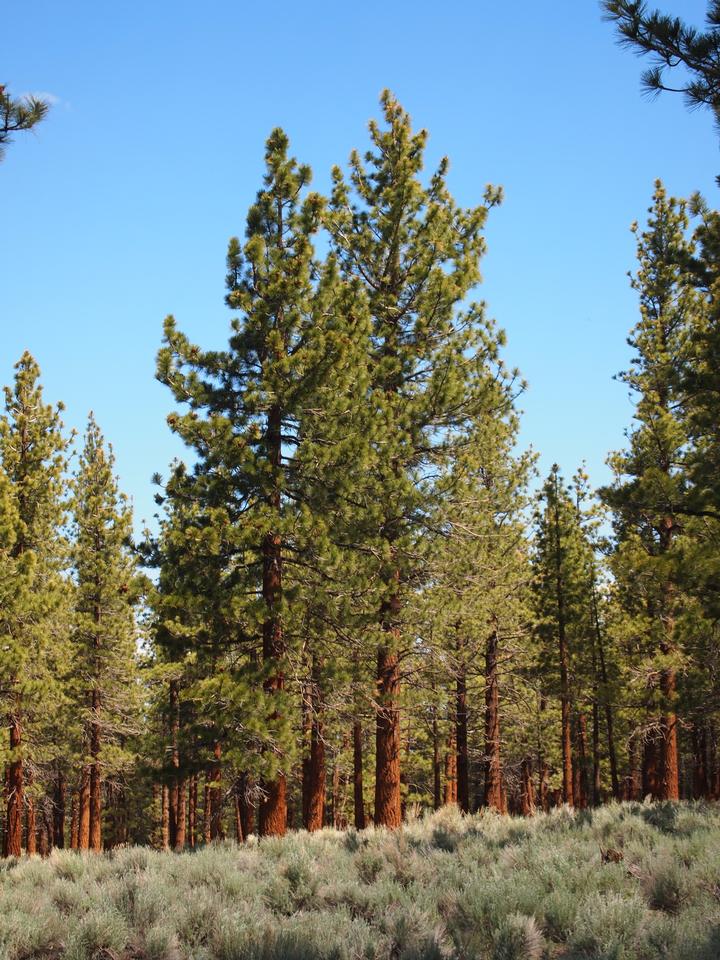Pine, Jeffrey
Pinus jeffreyi
Pinaceae - Pine
Description
Leaves: Needles mostly in groups of 3; 7" to 10" long; twisted; evergreen.
Twigs/buds: Twigs purple, thick; smell like pineapple when bruised. Buds not resinous.
Flowers/fruit: Monoecious. Fruit a woody cone; very short to no stalk; 6" to 9" long; reddish-brown; each scale armed with a short, sharp spine.
Bark: Similar to P. ponderosa, but usually darker and more purplish.
Wood: Important along the western coast of the U.S.; often grown and sold along with P. ponderosa; similar to P. ponderosa in structure and quality – no commercial distinction is made between the two species; used for lumber, molding, cabinets, mill work, windows, and doors.
General: Native to mountainous areas from southern Oregon to southern California and Baja California; not Utah. Similar to ponderosa pine. Drought resistant. Shade intolerant.
Landscape Use: Rarely planted in Utah, but a strong, vigorous one is growing in the Murray City Park (picture here). Worth planting as an alternative to Austrian or ponderosa pines. Will not be easy to find. Zones 5(4?)-7.
Characteristics
General
| Family | Pinaceae - Pine |
|---|---|
| Cultivar Availability | No |
| Hardiness Zone | 5-7 |
| Type | Conifer |
| Utah Native | No |
Growth
| Growth Rate | Medium |
|---|---|
| Mature Height | High |
| Longevity | High |
| Is Good Under Power Lines | No |
| Crown Shapes | Pyramidal |
Ornamental
| Bark | Yes |
|---|---|
| Fall Color | No |
| Flowers | No |
| Foliage | Yes |
| Fruit | No |
Tolerance
| Shade | Low |
|---|---|
| Salt | Medium |
| Drought | High |
| Poor Drainage | Low |
| Alkalinity | Medium |
| Transplanting | High |







